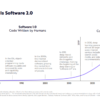The federal government is pouring billions of dollars into expanding broadband internet access. But it’s at the state level where the financial rubber meets the fiber-optic road. History suggests some states are ahead of the game while others will have to play catch-up.
The recently signed Infrastructure Investment and Jobs Act includes significant funding to expand broadband access, to help households pay for their monthly broadband connections and to help people learn how to productively use those connections. This legislation represents Congress’ first formal recognition of the essential nature of high-speed internet.
Historically, broadband funding has been distributed from federal entities like the Federal Communications Commission or U.S. Department of Agriculture directly to internet providers. The Government Accountability Office, which monitors and audits government operations, has been critical of these efforts.
This time, however, states are at the center of the funding that is coming down the pipeline. The US$42.5 billion Broadband Equity, Access, and Deployment program, known as BEAD, requires each state to generate a five-year action plan laying out how it will use the funds, including a process for prioritizing locations that are classified as “unserved” or “underserved.”
Similarly, the $2.7 billion Digital Equity Act requires each state to establish an organization responsible for developing a digital equity plan, which will help to disburse subgrants. Digital equity means ensuring that every community has adequate access to the technologies and skills needed to fully participate in society.
From newbies to wily veterans
Not all states are equally positioned to handle the funds that will flow down from the federal government. Some states have operated formal broadband offices for years, and many have extensive experience running their own broadband grant programs. In others there are multiple agencies with jurisdiction over broadband, so even deciding who will develop the action plan may be challenging.
Some states have built detailed broadband maps that move beyond the highly criticized FCC versions, and clearly depict areas without access. Others were early adopters of “digital inclusion” efforts and have an established base of nonprofits and public entities that have already been successful at this type of work.
In short, states have varying track records when it comes to broadband projects. Rolling out billions of dollars of funding will be a challenge for states without a history of evaluating applications – or those that are brand-new to the quickly growing field of digital equity.
Why each state gets $100 million
The largest portion of the forthcoming broadband funding is the BEAD program focused on the provision of new broadband infrastructure. Each state will be awarded an initial amount of $100 million, with the remainder of the $42.5 billion allocated based on the…
